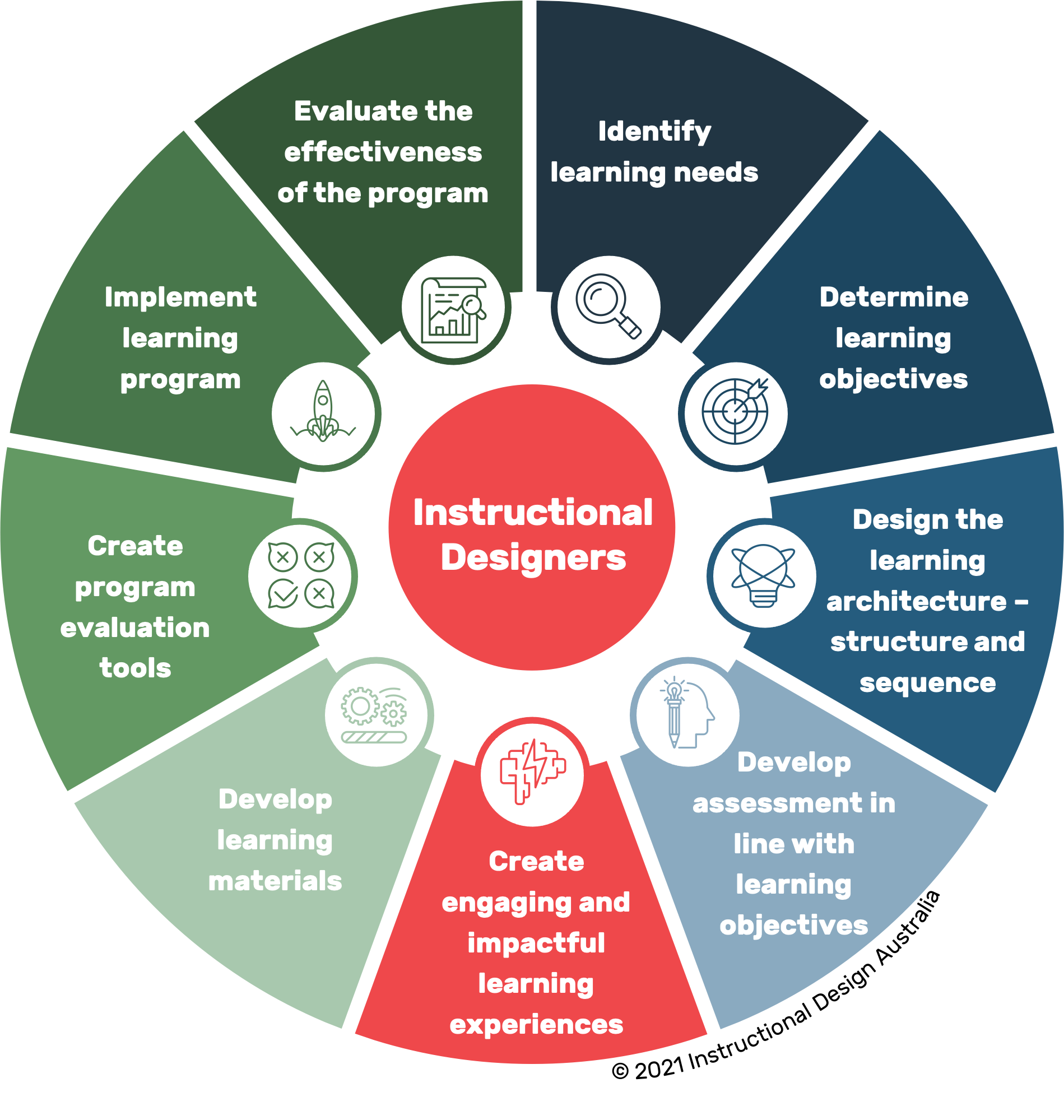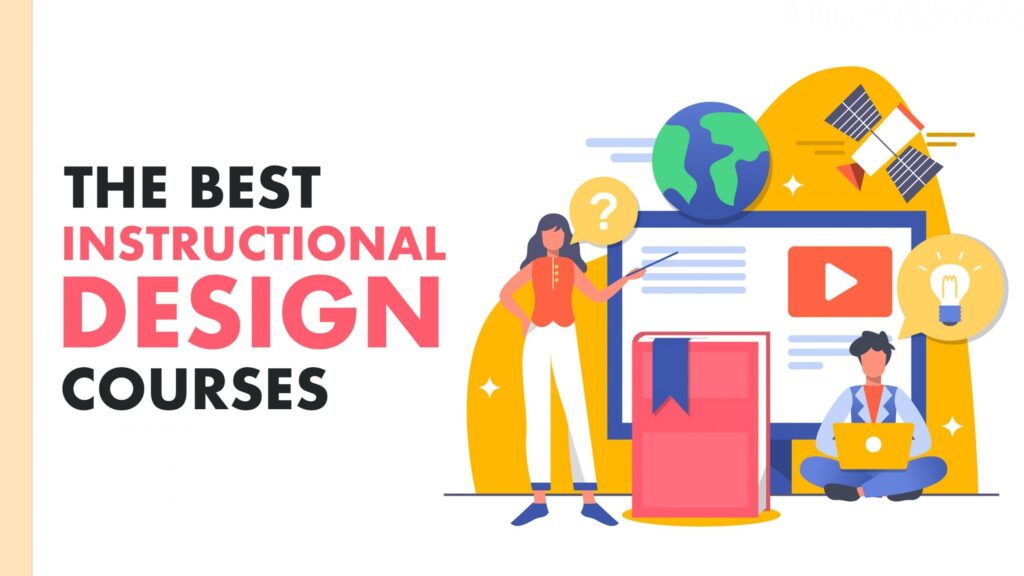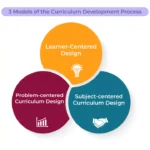My Journey into Instructional Design: Why Taking That Course Changed Everything
Remember that feeling? The one where you’re good at what you do, but something just feels… off? Like there’s a missing piece in your professional puzzle? That was me a few years ago. I was working in a role that involved a fair bit of training – explaining complex software to new users, onboarding new team members, even creating presentation slides that, let’s be honest, were probably more snooze-inducing than inspiring. I wanted people to learn, I really did. But I often felt like I was just throwing information at them, hoping some of it would stick.
Then, one quiet evening, while tumbling down a rabbit hole of career articles online, I saw a phrase: "Instructional Design." It sounded fancy, a bit academic, and completely unfamiliar. My first thought was, "Is that just a posh way of saying ‘teacher’?" But my curiosity was piqued. I clicked. And what I found wasn’t just a new job title; it was an entire philosophy, a craft, an art form dedicated to making learning truly happen.
What Exactly Is Instructional Design, Anyway? (And Why I Was Hooked)
Before diving into the course itself, let me demystify this for you, just like the course demystified it for me. When I first heard "Instructional Design," I imagined someone meticulously arranging textbooks on a shelf. Boy, was I wrong.
Think of it this way: if a teacher delivers knowledge, an Instructional Designer builds the road to that knowledge. We’re the architects of learning experiences. We don’t just tell you what to learn; we design how you’ll learn it, why it matters, and how we’ll know you’ve actually got it.
This means we think about:
- Who is learning? (Their background, prior knowledge, motivation)
- What do they need to learn? (Clear, measurable objectives)
- How can we make that learning engaging and effective? (Activities, interactions, stories)
- When and where is the best time/place for this learning? (Online, in-person, blended)
- How do we know they’ve truly learned it? (Assessments, practice, feedback)
When I understood this, it was like a lightbulb went off. This wasn’t just about making prettier slides; it was about truly understanding human cognition, motivation, and how to create an environment where learning isn’t just possible, but practically inevitable. I realized my previous training efforts were often missing these fundamental building blocks. I had to learn more. And that’s when I decided to take the plunge and enroll in an Instructional Design Course.
Stepping into the Classroom (or, More Likely, the Online Portal)
The course I chose was online, flexible, and promised to take me from a curious beginner to someone capable of designing robust learning experiences. I was nervous. Would it be too academic? Too technical? Would I be able to keep up?
From day one, my fears started to melt away. The course was structured, practical, and, most importantly, taught with the very principles of good instructional design that it was advocating! Imagine that – learning about effective learning through effective learning!
Here’s a glimpse into what my Instructional Design Course journey looked like:
1. Understanding the Learner: It All Starts with People
We didn’t jump straight into fancy software. The very first module was about people. We learned about adult learning principles (andragogy), how people absorb information, different learning styles (though the course clarified these aren’t as rigid as often thought!), and how to conduct a "learner analysis."
This was revolutionary for me. Instead of just thinking, "What do I need to teach?" I started asking, "Who am I teaching? What do they already know? What are their challenges? What motivates them?" It shifted my perspective from a content-delivery mindset to a learner-centric one.
2. Crafting the Blueprint: Goals, Objectives, and the Big Picture
Next, we tackled the art of setting clear, measurable learning objectives. This wasn’t just about saying, "Students will understand X." Oh no. It was about defining what a learner would be able to do after the learning, using action verbs and specific criteria. This is where concepts like Bloom’s Taxonomy (a framework for categorizing educational goals) came into play, helping us think about different levels of learning, from basic recall to complex evaluation.
This part of the course felt like learning to draw up architectural plans. You can’t build a house without a solid blueprint, and you can’t build effective learning without clear objectives.
3. The Models: ADDIE, SAM, and the Design Process
This is where the structured thinking of instructional design really shines. We delved into widely recognized models like ADDIE (Analysis, Design, Development, Implementation, Evaluation) and SAM (Successive Approximation Model).
- ADDIE felt like a comprehensive, step-by-step guide. It showed me how to break down the daunting task of creating a course into manageable phases.
- SAM offered a more agile, iterative approach, perfect for projects where you need to get something out quickly and then refine it based on feedback.
Learning these models gave me a framework. It stopped being about guesswork and started being about a repeatable, systematic process. It was incredibly empowering.
4. Building the Content: Strategies, Activities, and Engagement
This was the fun part! How do you take those objectives and turn them into engaging learning experiences? We explored:
- Instructional Strategies: When to use direct instruction, when to use problem-based learning, when to incorporate group activities.
- Storytelling: How to weave narratives into learning to make it memorable.
- Multimedia Principles: How to use visuals, audio, and video effectively without overwhelming the learner (think "less is more" and clear, concise design).
- Interaction Design: How to create quizzes, discussions, simulations, and other activities that keep learners active, not passive.
I learned about cognitive load theory – basically, how much information your brain can handle at once – and how to design content that respects those limits. My old, text-heavy slides suddenly looked like relics from another era!
5. Measuring Success: Assessment and Feedback
Finally, the course covered how to design assessments that genuinely measure whether the learning objectives have been met, and how to provide constructive feedback. It wasn’t just about multiple-choice tests; it was about performance-based assessments, rubrics, and creating opportunities for learners to apply what they’ve learned in meaningful ways.
This section tied everything together. If you’ve designed a great learning experience, how do you prove it works? This is how.
The "A-ha!" Moments and Practical Magic
Throughout the Instructional Design Course, there wasn’t just one "aha!" moment, but a continuous stream of them. It was like putting on a pair of special glasses that suddenly made the invisible structure of good learning visible everywhere.
I started dissecting every online tutorial, every training video, every presentation I encountered. I could see why some were effective and why others fell flat. I began to understand the intentional choices behind well-designed learning, and how to make those choices myself.
For our practical projects, we had to design mini-courses, create storyboards for e-learning modules, and even prototype interactive activities. This hands-on experience was invaluable. It wasn’t just theory; it was like learning a new language for creativity and then immediately using it to write a short story.
Beyond the Certificate: What I Gained
Finishing the Instructional Design Course wasn’t just about getting a piece of paper. It was about a complete transformation in my professional toolkit and mindset:
- A New Skillset: I gained practical skills in analysis, design, development, and evaluation that are highly sought after in today’s digital world.
- A Changed Perspective: I no longer see "teaching" as just delivering information, but as carefully crafting an experience.
- Confidence: I now feel confident in my ability to approach any learning challenge, break it down, and design an effective solution.
- Career Opportunities: The world of Instructional Design is vast and growing, spanning corporate training, higher education, non-profits, and even content creation. This course opened doors I never knew existed.
- Empowerment: I feel equipped to truly help people learn and grow, making a real impact on their understanding and skills.
Is an Instructional Design Course Right for YOU?
If any of this resonates, then perhaps an Instructional Design Course is your next step. Who might benefit most?
- Teachers: Looking to transition out of the traditional classroom or simply enhance your pedagogical skills for online learning.
- Trainers/L&D Professionals: Wanting to move beyond basic presentations and design truly impactful corporate training.
- Content Creators: Hoping to structure your courses, workshops, or educational videos for maximum learner engagement and retention.
- Subject Matter Experts: Who want to share your knowledge effectively and build structured learning programs.
- Anyone Passionate About Learning: If you love understanding how people learn and want to contribute to better educational experiences, this field is for you.
My Advice for Aspiring Instructional Designers
If you’re on the fence, here’s what I’d tell my past self:
- Do Your Research: Look into different courses. Some are university-based, others are bootcamps, some are self-paced. Find one that fits your learning style and goals.
- Embrace the Process: Instructional design is a systematic approach. Trust the models and frameworks you’ll learn.
- Build a Portfolio: As you go through the course, create projects that you can showcase. This is crucial for job hunting.
- Network: Connect with other instructional designers. The community is incredibly supportive and full of valuable insights.
- Be Curious and Empathetic: Always ask "why?" and always put the learner at the center of your design.
Taking that Instructional Design Course wasn’t just a professional development step; it was a pivot, a revelation. It transformed my understanding of learning, ignited a new passion, and opened up a whole new world of possibilities. If you’re looking to make a meaningful impact, to design experiences that truly help people grow, then perhaps it’s time for you to start your own instructional design journey. Who knows what incredible learning paths you’ll build?



